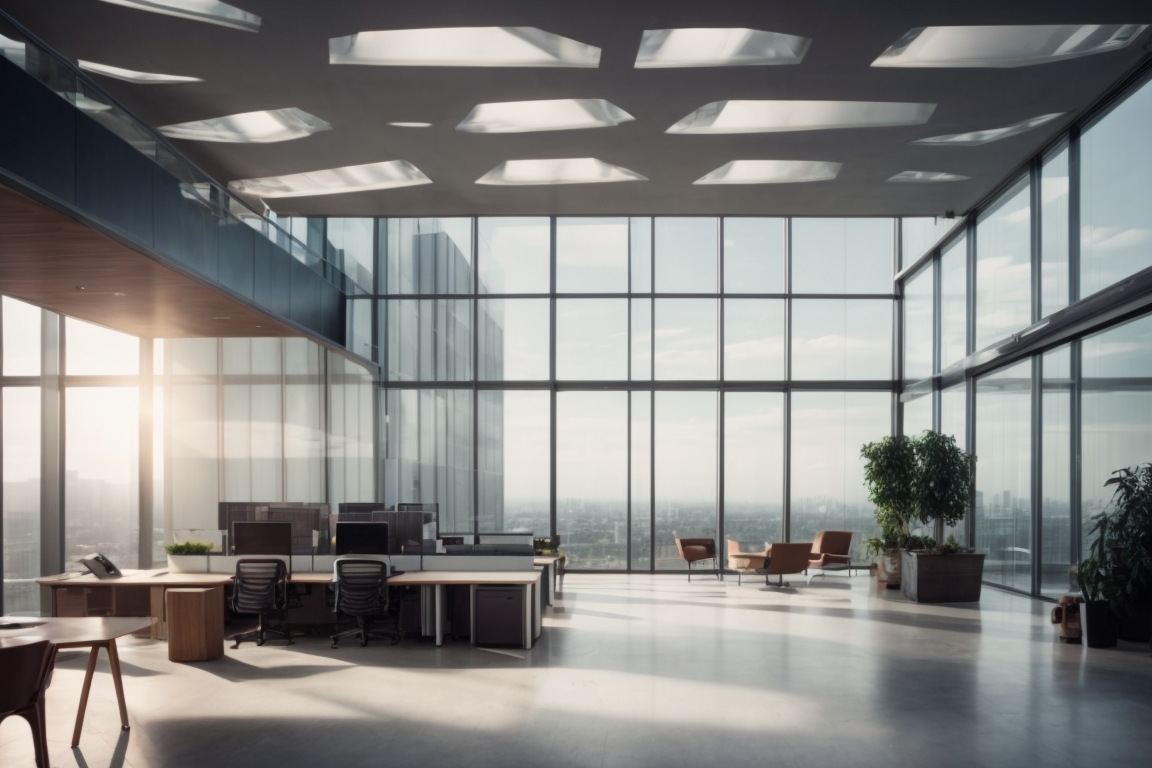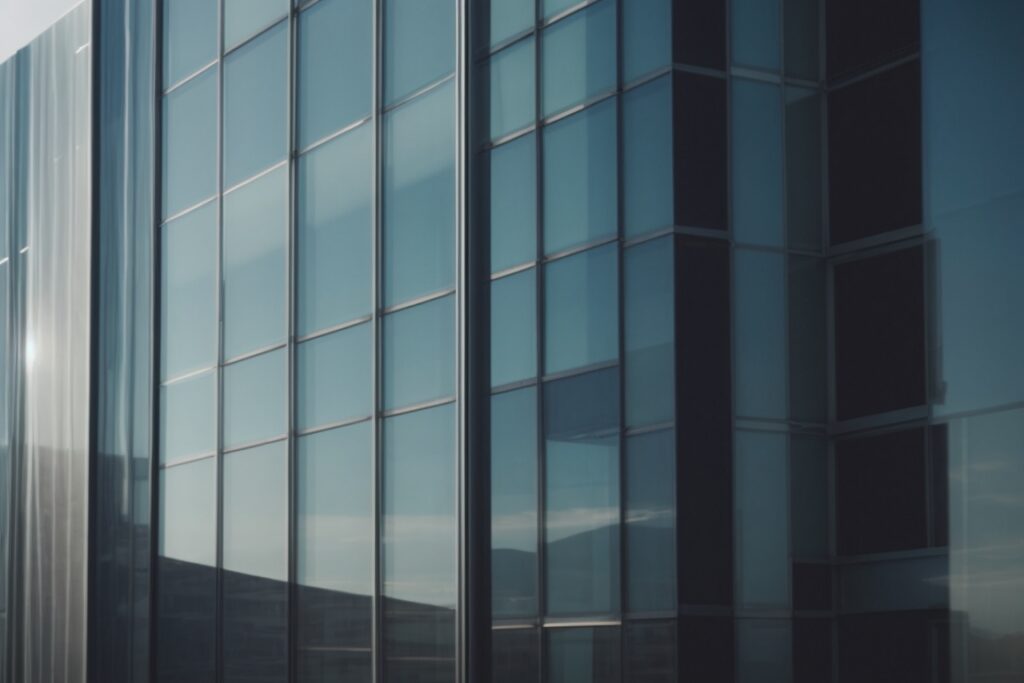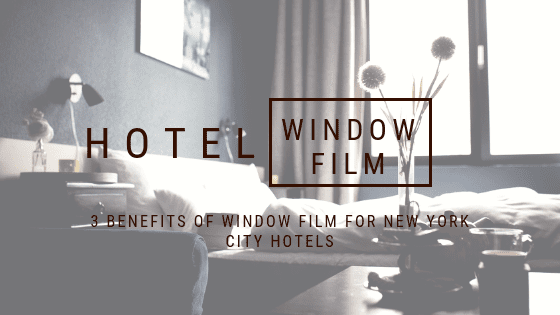Embracing the Solar Scene Shift in New York Architecture
In the bustling streets and towering skylines of New York, a significant shift in architectural aesthetics is taking form through the integration of innovative materials. Among these, solar control window film is emerging as a pivotal element that not only elevates the mod aesthetics of New York’s structures but also addresses the growing environmental and energy concerns. Despite its increasing relevance, the awareness surrounding the use of solar control window film in New York’s architecture remains limited among the city’s residents and property owners.
This lack of awareness is more than just a missed opportunity for enhancing building aesthetics; it represents a gap in the collective efforts towards sustainability and energy efficiency within urban spaces. New York, known for its relentless pursuit of innovation, stands at a crossroads where the adoption of solar control window films could redefine its architectural landscape. These films offer a dual advantage – they significantly reduce heat and glare from the sun, leading to decreased energy consumption, while simultaneously preserving the integrity and visual appeal of the building’s exterior.
However, the potential of solar control window film extends beyond just energy savings and aesthetic enhancement. It’s about shifting the narrative towards a more environmentally responsible and sustainable urban development. As New York continues to evolve, integrating such technologies is crucial for future-proofing its buildings against the challenges posed by climate change and urban heat islands. Raising awareness about the benefits and applications of solar control window film is the first step in catalyzing this architectural and environmental evolution in one of the world’s most iconic cities.
Unmasking the Overlooked Necessity: Solar Control Window Film in New York’s Urban Jungle
In the bustling streets of New York, where modern architecture meets timeless design, the integration of aesthetics and functionality poses a unique challenge. The primary issue is not just about embracing the latest trends in urban aesthetics but doing so while enhancing living and working spaces for better comfort and efficiency. Amidst the iconic glass facades and skyscrapers, there’s an emerging necessity overlooked by many: the critical role of solar control window film in shaping New York’s architectural landscape.
Solar control window film represents more than just an addition to New York’s architectural aesthetics; it’s a solution addressing the pressing problem of excessive solar heat gain and glare inside buildings. The struggle for energy efficiency and indoor comfort has been an ongoing battle for property owners and tenants alike. While traditional solutions like HVAC upgrades or window replacements are often considered, they overlook the simpler, cost-effective alternative that solar control window film provides. This oversight stems from a lack of awareness and understanding of the film’s benefits and applications in both residential and commercial settings.
Shocking Solar Control Stats in New York
In the bustling cities of New York, the demand for solar control window film has skyrocketed, driven by some striking facts about energy usage and environmental impact. Buildings in New York are responsible for almost 70% of the city’s energy consumption, with a significant portion of this energy used to regulate interior temperatures. Solar control window films can reduce this energy need by up to 30%, making them an essential component in the city’s strategy to reduce greenhouse gas emissions. Furthermore, New York’s peak summer temperatures have led to a surge in cooling demands, posing a significant strain on the electrical grid and amplifying the risk of blackouts. By integrating solar control window films, buildings not only reduce their energy consumption but also contribute to a more sustainable and reliable energy future for the city.
The Problem with Inadequate Solar Control Window Film in New York
As New York embraces the shift towards modern, aesthetically pleasing architecture, one significant issue stands out: the lack of effective solar control window film. This problem directly impacts New Yorkers, affecting both their comfort and their wallets. Without proper solar control solutions, residents and businesses face increased indoor temperatures, leading to a reliance on air conditioning to maintain a comfortable environment.
Excessive sun exposure not only elevates indoor temperatures but also causes harmful UV rays to penetrate through windows, putting at risk the health of occupants and causing fading and deterioration to interior furnishings. This creates a dilemma for New York architecture that aims to be both visually stunning and functional. The lack of adequate solar control window film can significantly reduce the lifespan of interior design elements, leading to increased costs for homeowners and businesses in maintenance and replacement. Furthermore, the excessive use of air conditioning to combat heat gains from insufficient solar control contributes to higher energy bills, placing a financial strain on residents and adding to the city’s overall energy consumption.
This problem extends beyond just individual discomfort and financial implications; it challenges the very principles of sustainable and efficient urban living that New York aspires to. Implementing effective solar control window film is not just a matter of enhancing comfort or reducing energy bills; it’s about adopting a solution that aligns with the aesthetics and environmental goals of modern New York architecture. Without addressing this issue, residents and businesses in New York are missing out on the benefits of modern innovations designed to improve living conditions and sustainability.
Understanding the Problem: The Solar Control Conundrum in New York
In New York’s bustling metropolis, where towering glass structures dominate the skyline, the adoption of solar control window film isn’t just a matter of adding to the aesthetic appeal of buildings. The real issue at hand goes deeper, touching on sustainability, energy consumption, and indoor comfort. With New York’s unique climate, which can swing from blazing summers to biting winters, the challenge becomes maintaining optimal indoor temperatures without over-relying on HVAC systems, which are both costly and energy-intensive.
This problem is compounded by the fact that traditional window solutions often fall short in providing the necessary solar heat gain control, leading to increased energy bills and carbon footprint. Moreover, the glaring sunlight typical to New York’s clear days can fade interior furnishings and create an uncomfortable work environment. Understanding this issue is crucial for architects, building owners, and residents alike as they seek more sustainable, cost-effective solutions to enhance the livability and functionality of their spaces.
Solar Control Window Film Enhancing NYC’s Iconic Structures
In New York, a landmark skyscraper faced severe energy inefficiency and uncomfortable indoor temperatures due to its extensive glass facade. After the application of solar control window film, the building not only achieved significant energy savings but also enhanced comfort for its occupants, showcasing the film’s effectiveness in a real-world setting. This case demonstrates the practical benefits of integrating solar control window film into New York architecture, making a compelling argument for its widespread adoption.
Consequences of Ignoring Solar Control Window Film in New York Architecture
Overlooking the integration of solar control window film within New York’s architectural fabric carries hefty penalties. Not addressing this crucial aspect of modern building design can significantly impact both the financial well-being of property owners and the comfort levels experienced by occupants.
Firstly, the absence of solar control film can result in dramatically increased energy bills. Buildings without this innovation are prone to higher temperatures during the summer months, necessitating more extensive use of air conditioning. This surge in energy consumption directly translates to heftier utility payments, placing an unnecessary financial burden on property owners.
Moreover, the prolonged exposure to intense sunlight can degrade interior furnishings, artwork, and fabrics. This degradation not only represents a loss in material value but also detracts from the aesthetic appeal and overall ambience of the space. Consequently, property owners may find themselves incurring additional expenses for repairs and replacements, further elevating maintenance costs.
Ignoring the implementation of solar control window film not only has immediate financial repercussions but also compromises the long-term sustainability and comfort of architectural endeavors in New York. By neglecting this innovation, property owners and developers risk both economic loss and diminished property value.
Economic Advantages of Solar Control Window Film in New York Residences
For New Yorkers, the integration of solar control window film translates into significant economic savings. The use of this technology in home architecture not only reduces the reliance on air conditioning during the sweltering summers but also minimizes heat loss in the bitter winters. This dual-action capability significantly lowers energy bills year-round, offering an economical advantage to homeowners. Moreover, protecting interior furnishings from the damaging effects of UV exposure extends their lifespan, reducing the need for costly replacements. Thus, solar control window film is an economically smart addition to any New York residence.
Transforming New York Skylines with Solar Control Window Film
In the bustling heart of New York, where the architectural landscape continuously evolves, integrating solar control window film into the metropolis’s mod aesthetics signifies a pivotal stride toward innovative, eco-friendly living. This positioning emphasizes how solar control window film adeptly counters the challenges of sustainability, energy efficiency, and occupant comfort that are increasingly relevant in a city known for its towering glass structures.
Solar control window film stands as a beacon of modernity in energy conservation, allowing New York’s iconic buildings to bask in natural light while minimizing heat gain and reducing reliance on air conditioning. This aligns seamlessly with the city’s ambitious sustainability goals, offering a practical solution to the energy consumption puzzle inherent in urban high rises.
Moreover, by mitigating UV exposure, this window film extends the lifespan of interior furnishings, thereby addressing a common concern among New Yorkers about the fading of luxurious fabrics and artwork exposed to direct sunlight. This protective feature not only preserves the aesthetic value of interior spaces but also contributes to substantial long-term savings on replacement costs.
In essence, the integration of solar control window film into New York’s architectural fabric is more than a nod to aesthetic trends; it represents a forward-thinking approach to living sustainably in an urban setting. It answers the call for energy efficiency and occupant comfort with a solution that enhances the visual and functional appeal of buildings. This not only elevates the city’s skyline but also sets a benchmark for future architectural endeavors in New York and beyond.
Embracing Solar Control Window Film in New York’s Architecture
Solar control window film emerges as a pivotal solution in New York’s architectural scene, seamlessly marrying form with function. In a city where the skyline constantly evolves, these innovative films offer a modern method to manage sunlight, heat, and UV exposure without sacrificing aesthetics. By applying solar control window film to buildings, New York architects and property owners tackle several urban challenges head-on.
This solution addresses the perennial problem of excessive heat and glare in high-rise buildings, significantly reducing the reliance on air conditioning and, consequently, energy consumption. The film’s ability to filter out harmful UV rays also protects interior furnishings from fading, extending their lifespan and maintaining the interior’s intended design.
Beyond its functional benefits, solar control window film contributes to the visual appeal of New York’s architecture. Available in various tints and finishes, it enhances building exteriors with a sleek, contemporary look that reflects the city’s modern ethos. As New York continues to adapt to environmental and aesthetic demands, solar control window film stands out as a key player in the metropolis’s shift towards smarter, more sustainable urban living.
Benefits and Features: Solar Control Window Film in New York
Solar control window film in New York brings multiple advantages, particularly relevant to its bustling urban environment. Its primary benefit includes significantly reducing glare and heat from the sun, enhancing comfort within homes and offices. This reduction in heat also translates to lower energy bills, as it diminishes the need for air conditioning during the city’s hot summers. Additionally, it blocks harmful UV rays, protecting the interior furnishings from fading and residents from skin damage. The film also adds an extra layer of privacy and security, making it harder for outsiders to peek inside while still allowing for an unobstructed view from the inside out.
Success Stories: New York Buildings Shine with Solar Control Window Film
In the bustling streets of New York, the introduction of solar control window film has marked a significant transformation in both residential and commercial buildings. A compelling story comes from The Greene Apartment Complex in Brooklyn, where the installation of solar control window film led to a noticeable reduction in cooling costs during the scorching summer months. The property manager reported a drop in energy expenditure by 20%, attributing this savings directly to the enhanced efficiency brought about by the window film. Residents also noted a significant improvement in comfort levels, with reduced glare and a consistent indoor temperature.
A testament to the impact of solar control window film in the commercial sector can be seen in the case of the Midtown Corporate Center. Prior to the installation, employees complained about the unbearable heat and distracting glare on their computer screens. After implementing solar control window film, the building manager observed not only a decrease in complaints but also an increase in worker productivity. The Corporate Center has since become an advocate for the film, citing its contribution to creating a more conducive work environment and lowering operational costs by reducing the reliance on air conditioning.
Case Study: Transforming New York Office Space with Solar Control Window Film
In the heart of New York City, a skyscraper’s management team decided to retrofit their building with solar control window film to combat excessive heat and glare affecting their tenants. Post-installation, the tenants reported a significant improvement in comfort, with a noticeable reduction in air conditioning costs. This intervention not only enhanced tenant satisfaction but also contributed to the building’s sustainability goals by reducing energy consumption. The success story of this skyscraper has become a leading example for other commercial spaces looking to improve tenant comfort and energy efficiency. Ready to transform your space? Contact us today and let’s make your property more comfortable and energy-efficient with our solar control window film solutions.







About The Author: Angus Faith
Angus Faith is a window film installer with a professional background in institutional and commercial building construction and sustainable building design. After leaving his hometown in Scotland, Angus relocated to New York with his wife and family. He has been installing window film for commercial buildings in New York for over ten years and has overseen numerous projects for schools, retail buildings, office buildings, and hotels. Over the years, his training and research has allowed him to become a product expert, and gain an in-depth understanding of products from top brands like 3M, LLumar, Vista, and more. When he's not consulting on commercial window film projects, Angus enjoys spending his time visiting New York's many parks and museums and traveling abroad whenever he gets the chance.
More posts by Angus Faith